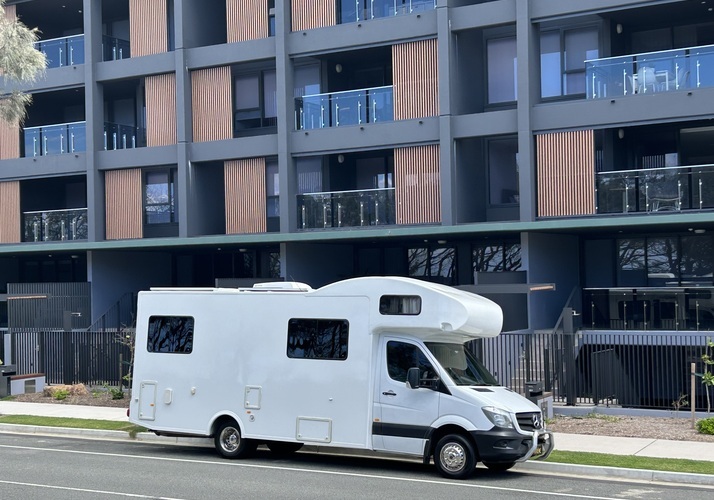Brisbane’s position as Queensland’s capital city and major transportation hub makes it an optimal starting point for recreational vehicle adventures throughout Australia’s eastern regions. The city hosts numerous rental companies offering diverse motorhome options, from compact units suitable for couples to large family-oriented vehicles with extensive amenities and sleeping arrangements. Selecting appropriate motorhome hire in Brisbane requires careful evaluation of multiple factors including vehicle specifications, rental terms, insurance coverage, and operational requirements that align with specific travel objectives and group dynamics. Understanding the technical differences between motorhome categories, evaluating rental company reliability, and comprehending insurance implications enables informed decisions that enhance travel experiences while minimizing potential complications. Professional evaluation of these factors ensures optimal matching between vehicle capabilities and intended usage patterns, resulting in successful and memorable recreational vehicle adventures.
Vehicle Classification and Technical Specifications
Motorhome categories are classified by size, weight, and amenity levels, with each category offering distinct advantages for different travel scenarios. Class A motorhomes represent the largest category, typically measuring 8-12 meters in length and weighing 10,000-15,000 kilograms when fully loaded. These units feature automotive-grade chassis with powerful diesel engines delivering 200-300 horsepower, enabling comfortable highway cruising while towing additional vehicles or equipment.
Class B motorhomes utilize standard van chassis with interior modifications that maximize space efficiency within compact dimensions. These units typically measure 5.5-7 meters in length and weigh 3,500-4,500 kilograms, making them suitable for standard driving licenses while providing essential amenities including sleeping accommodations, cooking facilities, and bathroom facilities.
Class C motorhomes represent a middle ground, utilizing truck chassis with custom-built living quarters that extend over the cab area. These units provide enhanced headroom and storage capacity while maintaining manageable dimensions for less experienced drivers. Engine specifications typically include turbocharged diesel or gasoline engines producing 150-250 horsepower with torque characteristics optimized for heavy-load applications.
Understanding gross vehicle weight ratings (GVWR) becomes critical for license requirements and operational limitations. Queensland driving regulations require specialized endorsements for vehicles exceeding 4,500 kilograms GVWR, while interstate travel may involve varying weight restrictions and licensing requirements that affect rental eligibility.
Rental Company Evaluation Criteria
Fleet age and maintenance standards significantly impact reliability and safety during extended travels. Reputable rental companies maintain detailed service records and adhere to manufacturer-recommended maintenance schedules that ensure optimal performance and minimize breakdown risks. Vehicles should undergo comprehensive inspections between rentals, including engine diagnostics, brake system evaluations, and safety equipment verification.
Insurance coverage options vary substantially between companies, with some providing comprehensive coverage while others offer minimal protection requiring additional premium payments for adequate coverage. Understanding liability limits, damage deductibles, and coverage exclusions prevents unexpected financial exposure during rental periods. Some policies exclude certain activities or geographical areas that might affect planned itineraries.
Customer service capabilities become crucial during emergencies or technical difficulties encountered in remote locations. Companies with 24-hour support services and established relationships with service providers throughout Queensland and neighboring states provide enhanced security and peace of mind during extended travels.
Equipment quality and completeness affect comfort levels and operational efficiency during motorhome adventures. Standard equipment should include functional cooking appliances, adequate bedding, basic tools, and safety equipment including fire extinguishers and first aid supplies. Optional equipment packages may include outdoor furniture, entertainment systems, and specialized gear for specific activities.
Pre-Rental Inspection and Documentation
Thorough pre-rental inspections protect renters from responsibility for pre-existing damage while ensuring all systems function properly before departure. Photographic documentation of exterior conditions, including minor scratches, dents, or worn areas, establishes baseline conditions that prevent disputes upon return. Interior inspections should verify operation of all appliances, lighting systems, and mechanical components.
Water system testing ensures proper operation of pumps, tanks, and waste management systems that are essential for self-contained camping. Testing should include hot water system operation, shower functionality, and toilet system operation. Understanding tank capacities and monitoring systems prevents overflows and system damage during travels.
Electrical system evaluation includes testing of both 12-volt and 240-volt systems, solar charging capabilities, and battery condition. Understanding power consumption rates and available charging methods prevents situations where insufficient power affects comfort or safety during extended stays in remote locations.
Propane system inspection verifies proper connections, tank levels, and safety shutoff mechanisms. Understanding propane consumption rates for heating, cooking, and hot water systems enables proper planning for extended travels and refueling requirements.
Route Planning and Operational Considerations
Queensland’s diverse geography presents varying challenges for motorhome travel, from coastal highways with salt air exposure to mountain passes requiring enhanced engine performance. Understanding vehicle limitations regarding grades, clearances, and turning radii prevents situations where physical constraints prohibit access to desired destinations.
Fuel consumption calculations become critical for budget planning and range determination. Large motorhomes typically consume 12-20 liters per 100 kilometers depending on terrain, driving conditions, and loading. Understanding these consumption rates enables accurate fuel cost estimation and refueling interval planning.
Camping facility research ensures appropriate accommodations for vehicle size and required services. Some camping areas restrict vehicle length or have access roads unsuitable for large motorhomes. Advanced planning identifies suitable facilities and backup options that accommodate specific vehicle requirements.
Weight distribution affects handling characteristics and legal compliance with axle weight limits. Understanding proper loading procedures prevents handling problems while ensuring compliance with transportation regulations. Overloading can result in fines and safety hazards that compromise travel experiences.
Technology Integration and Navigation Systems
Modern motorhomes incorporate sophisticated navigation systems designed specifically for recreational vehicles, including height and weight restrictions, bridge clearances, and propane restriction information. These systems prevent routing through areas inappropriate for large vehicles while optimizing routes for fuel efficiency and travel time.
Communication systems become important for emergency situations and coordination with camping facilities. Many motorhomes include mobile phone signal boosters and internet connectivity options that maintain communication capabilities in remote areas where standard cellular coverage may be limited.
Monitoring systems provide real-time information about tank levels, battery status, and system operations that enable proactive management of resources and early identification of potential problems. Understanding these systems prevents situations where resource depletion or system failures affect comfort or safety during extended stays in remote locations.









